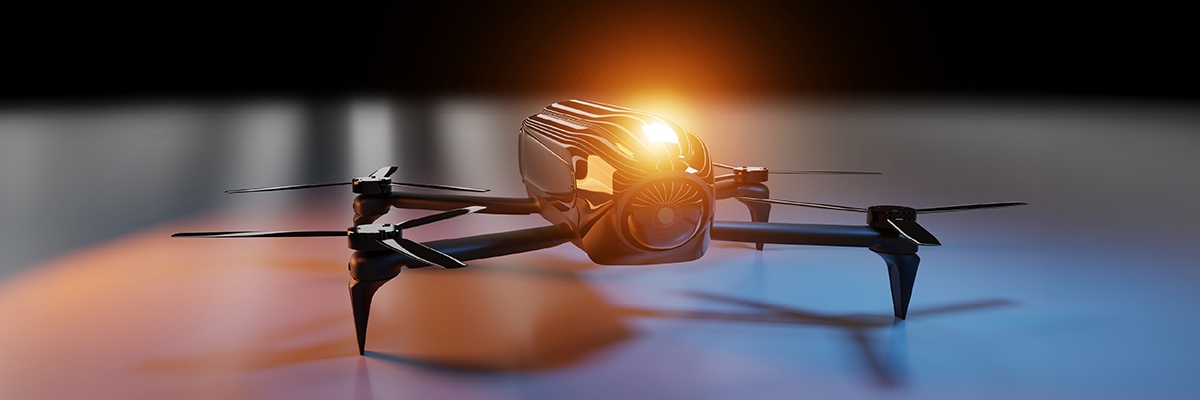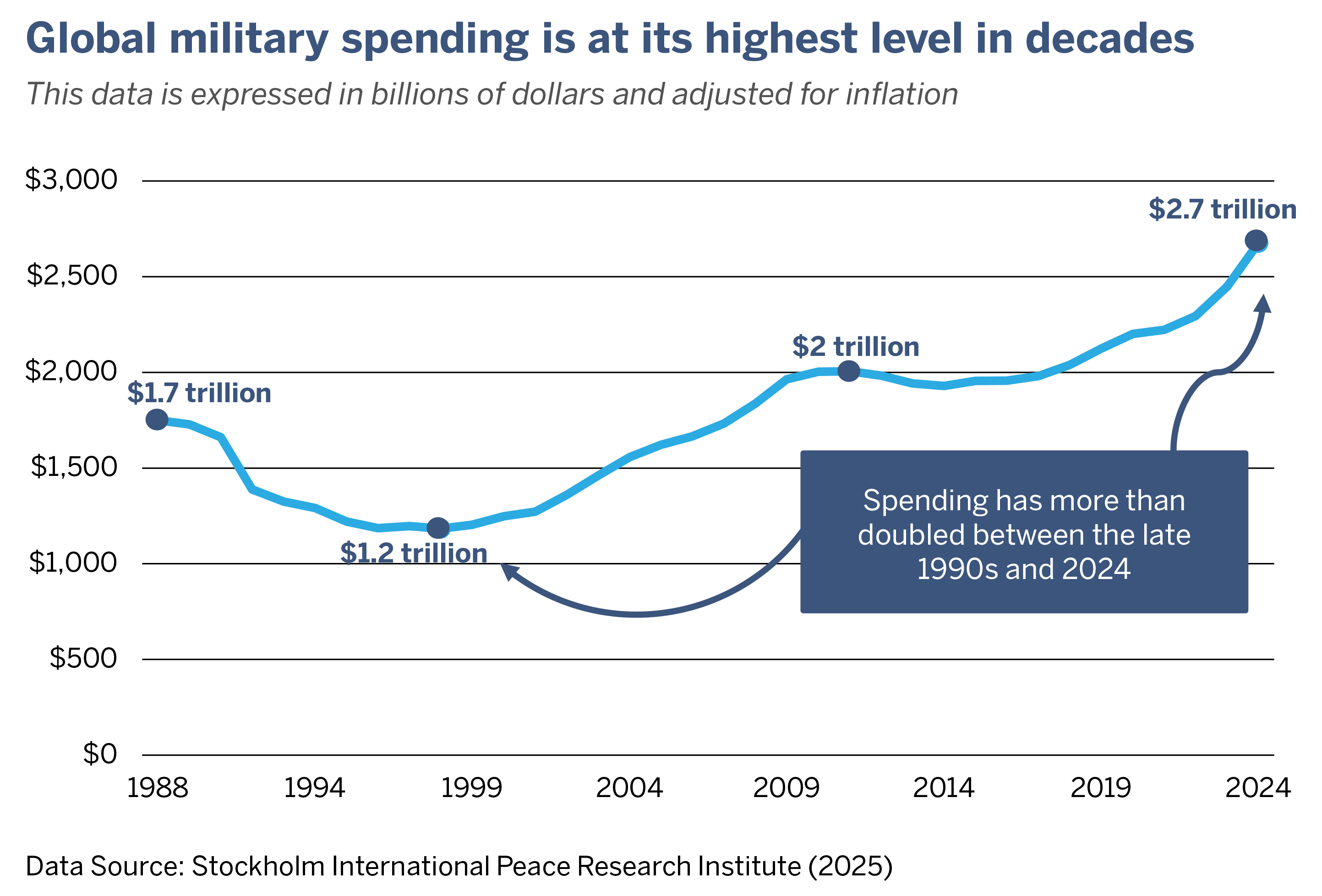International Equities: Propelled by defense spending
Kate Warren and Peter Carpenter 02-Oct-2025

International equities can be a means to gain exposure to powerful global thematics, particularly in times of economic uncertainty. Trivalent Investments believes capturing the most attractive returns requires more than just broad-based exposure. It calls for a focused effort to identify and select companies that are not just part of an emerging trend but are positioned to benefit from it. One such trend driving performance across international equities is the surge in defense spending. In fact, this may be a major growth driver with a long runway, so to speak.
Some Context
It appears that the global defense sector is on the verge of unprecedented growth due, in part, to escalating geopolitical risks, government initiatives, and rapid technological advancements. In 2024, global defense spending reached a record high of nearly $2.7 trillion, accounting for approximately 2.5% of global GDP, according to research from the Stockholm International Peace Research Institute. The arrow continues to point up for future spending.

Simon van Teutem, Bastian Herre, and Pablo Arriagada (2025) – “In 2024, global military spending reached its highest level in decades.” Published online at OurWorldinData.org. Retrieved from: ‘https://ourworldindata.org/data-insights/in-2024-global-military-spending-reached-its-highest-level-in-decades’
After the end of the Cold War, military spending declined significantly as the perceived threat of large-scale conflict diminished. This “Peace Dividend” allowed many nations to reallocate resources to various infrastructure and other domestic projects. But it also resulted in decades of underinvestment in defense capabilities.
Fast forward to today and rising tensions between major powers and the modernization of technological warfare have reignited the desire for more robust—and costly—national defense strategies. As a result, defense budgets are ramping up, with both developed and emerging countries investing heavily in their military programs.
Targeting 5% of GDP
In June of 2025, it was reported that all 32 NATO members agreed to increase their annual defense spending target to 5% of GDP by 2035. Currently, all NATO countries spend more on health and education than on defense. However, meeting the new target would push 21 countries to spend more on military than on education, according to our research. Poland is already leading the way, allocating 4.1% of its GDP to defense in response to the war in Ukraine. For context, despite having the world’s largest military budget, the U.S. still spends only about 3% of its GDP on defense—compared to 16.5% on health care—according to our research.
Rising Geopolitical Tensions
Russia’s invasion of Ukraine and the ensuing war is entering its third year, and this appears to be a key driver of renewed investment in defense across Europe. While tentative peace talks have emerged, the conflict shows no immediate signs of resolution. As NATO nations continue to supply arms to Ukraine, European countries are ramping up military spending and positioning to reduce dependency on American aid.
Eastern Europe is not the only geopolitical hotspot. The Middle East remains highly volatile with elevated regional hostilities. And tensions between the U.S. and China continue to escalate over Taiwan and a host of other complex factors. In fact, China’s rapid military modernization has prompted the U.S. to reinforce its presence in the region. In response, U.S. allies, including Japan, South Korea, and Australia, have made significant investments in defense to counter Chinese threats.
Meanwhile, many countries are also rethinking defense procurement strategies, prioritizing in-country defense acquisition to reduce reliance on third-party suppliers and reinforce industrial sovereignty in critical technologies. All this suggests that defense spending is on the rise and likely to remain elevated.
Technological Advancements
Another driver of elevated defense spending is rapidly evolving technology and modern security challenges. Military conflict is shifting from traditional mechanized combat and low-intensity engagements to high-tech, high-intensity operations. All this is reshaping defense requirements. We are seeing a new wave of digital defense companies fundamentally changing the market, including the introduction of scalable, AI-driven software solutions. Emerging players from South Korea, Turkey, Poland, and Brazil are gaining international traction, developing niche technologies often backed by government incentives and localized production strategies.
Military drones, for example, are now a driving force behind modern defense strategies. The global market for military drones reached $12.9 billion in 2023 and is expected to grow at a compounded annual rate of 10%, reaching $27.6 billion by 2031, according to Insights Partners.
Early Days
Our investment team clearly sees an accelerating global defense cycle that is helping to reshape the international investment landscape. Many nations are ratcheting up budgets, modernizing military strategies, and in-sourcing production. The convergence of localized defense manufacturing, rising geopolitical tension, and technological advancement is conspiring to create a robust pipeline of opportunities in international defense-related equities. At Trivalent, we will continue to research and identify companies across aerospace, microelectronics, cybersecurity, information technology, and other key industries that are well-positioned to benefit from long-term structural shifts in global defense markets. Our focus remains on uncovering strong individual performers within this evolving macro environment.



